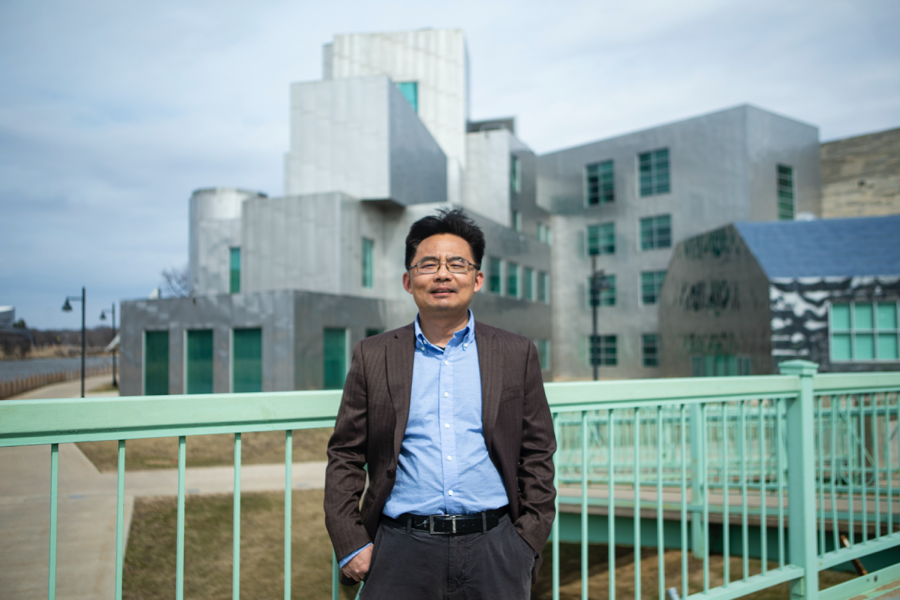Jun Wang, a professor in the College of Engineering at the University of Iowa, helped develop an invention that Time Magazine named one of its “Best Inventions of 2023.”
The invention is called Tropospheric Emissions: Monitoring of Pollution, or TEMPO, and is an innovative way to measure pollutants in the air in real-time during the day.
Previously, air pollutants were tracked by a satellite that only took one image per day on a two-dimensional plane, Wang said. TEMPO is a satellite that can take hourly three-dimensional pictures from sunrise to sunset as it rotates along with the movement of the Earth, he said.
The satellite also tracks pollutants at a higher quality resolution across North America. All of this means that it will now be easier to accurately track and predict the movement of air pollutants, which is useful in situations like the Canadian forest fires this summer, Wang said.
Charles Stanier, a professor of biochemical and chemical engineering at the UI, said this real-time data can show cities where air pollutants, such as fire smoke, are heading so they can prepare air quality plans.
Stanier also played a part in the development and research of TEMPO. A Nov. 8 article from the UI’s college of engineering stated he installed an instrument known as “Pandora” on a ground site near campus. This instrument can be used to validate the data collected by satellites like TEMPO.
The project to create TEMPO has been ongoing for about a decade and is funded by NASA and led by the Harvard and Smithsonian Center for Astrophysics, Wang said. It has taken the collaboration of scientists and engineers across the entire nation, and Wang was the first member of TEMPO’s science team and the only member from the UI, he said.
The satellite was launched by SpaceX in early April, Wang said. His contributions to the project were to help design TEMPO and analyze the data from its three-dimensional measurements to better track air pollutants, he said.
In August, TEMPO took its first image, which was made available to the public in a press release. In terms of next steps, Wang said he and the other researchers involved will be looking at the data to ensure that it is stable. After that is determined, day-to-day data will be available for the public to view, which should occur sometime in the spring, Wang said.
Wang said he was honored to find that TEMPO was recognized in a national magazine like Time, and he feels fortunate to be a part of such a revolutionary project.
“On one hand I feel like I was lucky to be part of it,” Wang said. “On the other hand, I also feel that it’s very important to collaborate and work with others as a big team to tackle the problems like air pollution for society over the continental or even global scale.”
According to his colleagues, Wang and his expertise have shed a positive light on the UI’s work, especially in the field of air pollution detection and satellite imaging.
RELATED: UI professors build instruments for space mission set to launch with SpaceX in 2025
Gregory Carmichael, a UI professor of chemical and biochemical engineering, said Wang has helped recruit experienced people to the university for further research and development of projects in this area of study.
A recent example of this was the large role Wang played in the UI bringing Matthew McGill, who is a former deputy administrator at NASA and expert in satellite technologies, to campus, Carmichael said.
Carmichael said Time recognition of TEMPO showcases the hard work of Wang and the many other people involved in the development of the satellite.
“I think it shows that scientists like Jun at the University of Iowa are making important contributions, and this is a very specific example of that,” Carmichael said.



